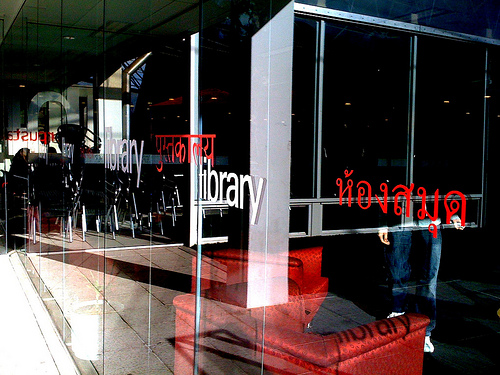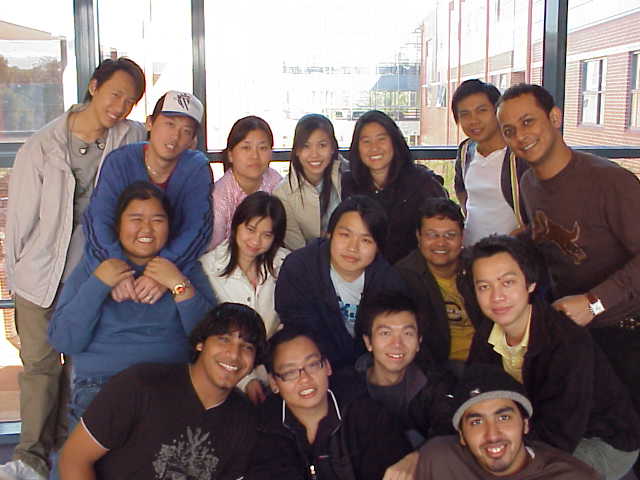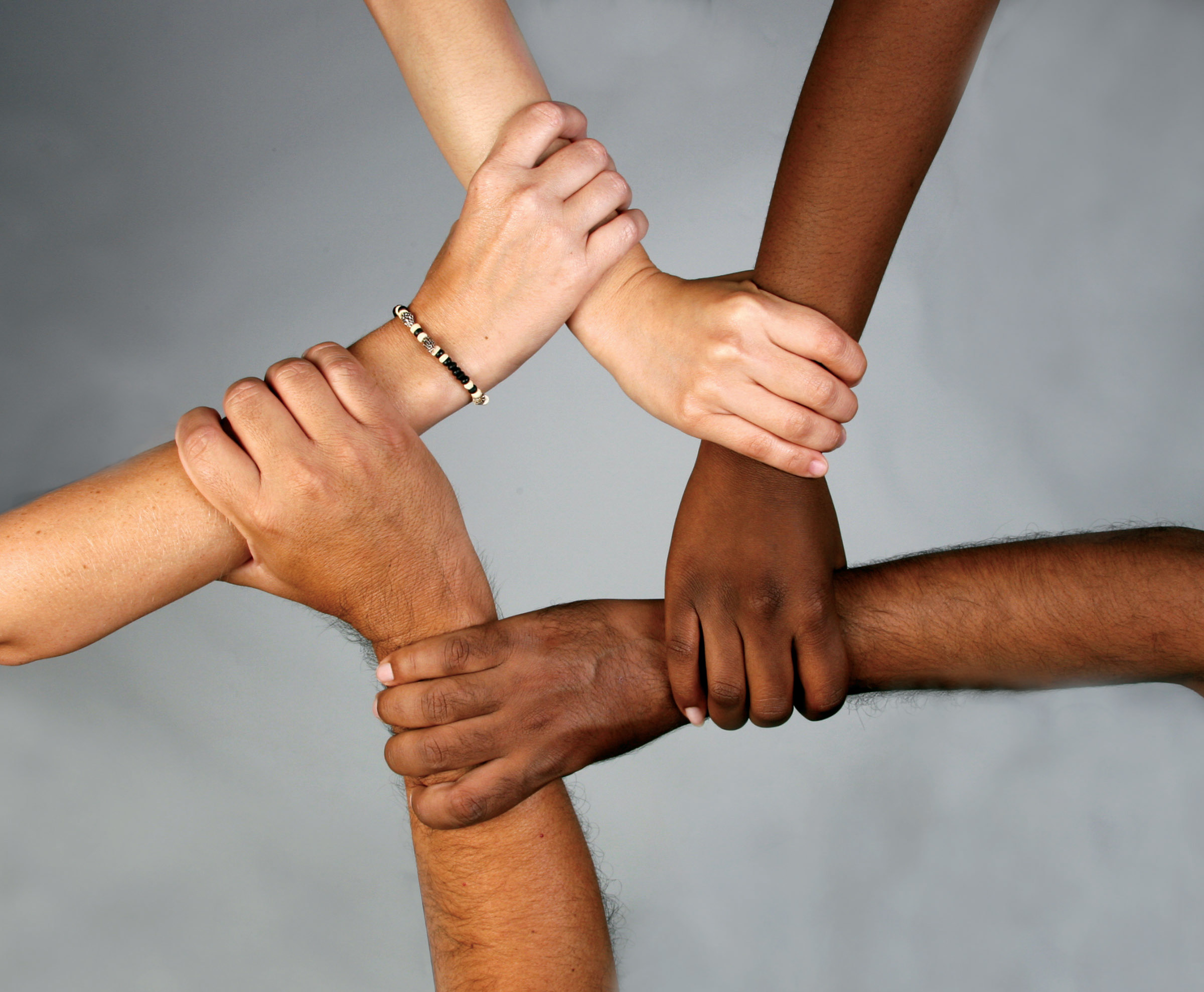Image #1

Reasons for choosing this image
This image captured by attention because it is different from everyday pictures. It is the image of a library door. The word library is been written on the door in many languages. It is an interesting picture to look at because it causes the viewer to take a moment and think about the many words on the door. Some people might interpret the picture as an artist’s representation of the word library; others might think that the picture is taken in a community that has people from diverse backgrounds because of the different languages used in writing the word library. On the other hand, some people might not even look at the image especially the non-students. They might dismiss it especially if they do not visit a library. The picture clearly conveys the message about language diversity. The community is a melting point for people who speak different languages. They have to look for a way to communicate to avoid communication breakdowns.
How the image makes me feel
On one hand, the image makes me feel agitated because I am yet to return a book I borrowed from the library and it will be due in an hour’s time and I have not finished using it. I will have to pay a lateness fine. On the other hand, it makes me feel very fortunate to belong in a community that has educational resources because I have just seen a documentary about students who learn under trees in some countries in southern Sahara. It also makes me very proud to live in a culturally diverse community.
The different ways of writing the word library show that there are different people in the world but at times they have a common goal. The word has been written in all the languages spoken in this community. I think this makes every one of those languages important. Just like every person from each community is. This means that different people can coexist in one community and share the same resources even though they speak different languages. In the image, the library is open for use to all.
Forming perceptions about diversity
The image depicts language diversity. This community is made up of people from divergent cultures and countries. This is an international institution that seeks to make every individual feel at home away from home. Many people have different perceptions about people who are they consider ‘others’. In some communities, people from other communities are treated as outsiders. They are not allowed to use the resources found in the host community. This is a perception that has existed for a long time. The picture helps to show that there are many different languages and each language is important. It means that people from different backgrounds can live and integrate into one community. They are part and parcel of that community and effort has been made to ensure that those with limited knowledge of English do not get lost looking for the library.
Questions raised
- What was the purpose of taking this image? Is the intention to raise people’s awareness about language diversity or just to show off a beautiful piece of architecture?
- What is the intention of writing the word library in many languages?
- Do people read and use libraries?
- What do people feel about libraries?
- How do people feel about people who speak a different language?
- Are some people discriminated against because they speak a different language?
Resources related to the image
Golden, K W & Matlock, J, 2007, Ten Core Ingredients for Fostering Campus Diversity.
This article looks at language diversity in campus. People are different and should foster unity due to the many similarities they have instead of being divided along their differences. In learning institutions students come from divergent backgrounds. An international student may come from an institution that did not have a library. They may not know how to use one. They need to be guided to fit in the new environment. In a culturally diverse community the minority need to be integrated into the larger community. This is done well by people from their own background because they understand the situation better. In an international institution leaders should be elected from the various cultures. Diversity needs to be embraced by everyone in the community. This should not be left to a few people to deal with. Just like ‘library’ has been written in different languages to show that the resource belongs to all so should the effort to live with one another be.
The article is useful because it shows the need for diversity in a learning institution. All the stakeholders are important in promoting cultural diversity in an institution. Their cooperation brings a greater understanding. The people learn how to deal with one another and this reduces conflicts thus peace is promoted.
Image #2

Reasons for choosing this image
I chose this image because it shows the happy faces of my classmates. The people in the photo belong to different countries and cultures. Looking at the picture one can see that these are human beings who are not afraid to be together and express their feelings like their smiles depict. A person looking at this image will probably see a group of young people. A closer look will reveal their different ethnicities. They have met in a learning institution where they share the same goals.
How the image makes me feel
When I look at this image I feel very happy. This is not just because I know the people in the photo but because I have learnt a lot about other cultures. Before I came to this institution I used to be skeptical about people from other cultures. This has changed with the interaction and I am now more tolerant of people who are different from me. This image makes me believe that we are equal in God’s eyes despite our physical differences. The bottom line is that we are human beings and our differences should not matter. People from different backgrounds can splash a smile that can bring warmth to any heart just like the smiles do for me in the image.
Forming perceptions about diversity
The image depicts a cultural diversity. People from different cultural backgrounds may treat each other differently. This is usually because of animosity learned from home. Some people do not tolerate people who are different from them. In fact some people think that the people who do not look like them must be less human. This would explain why people kill one another. On the other hand the image may have a positive influence on the people who are culturally intolerant. This is because in the image people from different cultures seem to be comfortable with each other and even share a photograph. This is very important in today’s world. The world has become a global village. People from different cultures meet to do business, study or to share ideas. Thus it is important that they get along.
Questions raised
- Why are the people in this image smiling? Is it a pose for the camera or do the smiles come from their hearts?
- What kind of a group do these people represent?
- What do people feel about those who are different from them?
- What is the perception of people about cultural diversity?
- What message does this image portray?
- Does the perception of the image vary among people in different communities?
Resources related to the image
Ibarra, R, 2009, Context Diversity: Reframing Higher Education In The 21st Century.
This article addresses the issue of cultural diversity in campus. It talks about the different strategies that have been employed to achieve diversity in campuses. Some of the strategies have not been successful and instead a cultural dilemma has been created. To address this crisis the institutions have come up with other strategies to ensure diversity is promoted and integration into the institutions is smooth. This will ensure proper learning and hence success of the strategies.
The article is useful because it addresses the issue of cultural diversity in learning. Today, learning institutions have opened their doors to international students. Therefore students who could not access higher learning in their home countries have a chance to fulfill their dreams. On the contrary as these students go to foreign countries they face many challenges due to cultural differences. The learning institutions have come up with ways to ensure that cultural diversity is attained through multicultural diversity. This has led to cultural awareness aimed at reaching and retaining more foreign students. More needs to be done to increase cultural diversity awareness in campuses so that more people can benefit from the programs offered and promote cultural tolerance.
Image #3

Reasons for choosing this image
One of the main reason that informed the decision by this writer to choose this photo was it capture two youths (a white lady and an African American young man) having sharing their time together, and happily so. Therefore, the fact that these two young people have broken the cultural barrier between them, and instead choosing to focus more on the good things in life, as opposed to their cultural orientation, contributed in a significant way to the decision by this author to choose this particular image.
How the image makes me feel
Looking at this image, it cajole to this author the feeling of a need for each other of use to embrace our various differences in terms of diversity and in this case our individual races. In light of this, it is the feeling of this author that our racial diversity needs to be viewed as a source of strength to us, as opposed to a source fro division.
Forming perceptions about diversity
This image is vital as regards the formation of perception on the issue of diversity. In this case, the issue of racial diversity is well highlighted, and more so with respect to interracial relationships. There are those who are of the opinion that interracial relationships are riddled with a lot of challenges. In this case, the image could be a pointer to the fact that contrary to what many of us may be led to believe, interracial relationships could after all, be both workable and happy unions, if only we took the time to know others, and in the process, appreciate their cultural diversity. In this particular picture, the young people are seen happily looking at something on the phone in a manner that does not suggest that race could be an issue to what they share between themselves.
Questions raised
- Was this picture taken to inform on the existence of relationships between races?
- Would the family and rinds of this young man and woman have a problem with the two dating, given their differences in terms of race?
- Has the discrimination on inter-racial relationships mellowed?
- Would the perceptions held by the young on racial diversity differ significantly from those held by the elderly?
Resource to this image
Jayson, S. (2006). “New generation doesn’t blink at interracial relationships”. USA.
This article indicates that the generation between the ages of 14 and 24 years appears to be more tolerant to the issue of racial diversity, when compared to the other age brackets in the United States. Further, the article has also reported of a different study that was carried out in Northbrook by Teenage Research Unlimited, and which revealed that out of every ten teenagers, six were likely to have friends from different racial backgrounds. As opposed to the grandparents and the parents of the teenagers of today, the generation that is currently not above the age of twenty is more open to multiculturism, diversity, and inclusion.
In addition to the college requirements that cultural diversity course become compulsory, the media too has greatly enhanced the colour-blindness element in the society, as we witnesses the televisions, movies, as well as the advertising agencies daily depicting interracial romance and friendship.
Amongst the generation at the college level, the issue of racial diversity is more prevalent, as this article will attest, since this particular age group has widely been exposed to diverse individual from various backgrounds.
The article is useful because it highlight the fact that racial diversity is more prevalent with the teenagers, and more so with those in college. In addition, the article has also provided the causes fro this particular scenario, in that the teenage generation at school have to interact with individuals from different ethnic backgrounds. In addition, the article has also provided that a majority of the institutions of higher learning now make it a requirement that al students pursue racial diversity as part of their course, in effect making them more enlightened on this issue.
Image #4: Diversity in business

Reasons for choosing this image
One of the reasons why this writer chose this image is because it depicts unity and strength, despite the fact that the individual involved are quite diverse, from a cultural point of view. What this means therefore is that people could be from diverse cultural backgrounds, and yet come together and establish a strong bond and working relationship. In this regard, the image has explicitly highlighted the issue of strength in our diversity, which is why this author decided to choose this particular image.
How the image makes me feel
By looking at this image, the perception that this writer gets is that we are in a position to overcome the various differences that our cultural diversity may bring to the workplace, and instead choose to embrace the positive side of this diversity, in this case, building a strong organisation by relying on the various talents that we are gifted in, as opposed to fighting one another. It is a depiction of how far an organisation can go if we choose to concentrate our energies and strengths on the positive side of our lives, to steer the organization forward.
Forming perceptions about diversity
This image highlights the issue of diversity at the workplace. In this case, there is a need to appreciate the fact that different places of work are characterized by individuals that comes from different cultural settings. From such a perspective therefore, this image is important, since it could serve to dispel fears that the cultural differences that exist within the workplace could be a source of weakness. Instead, this image depicts an organisation that is strong, in that the employees have chosen to embrace their diversity as their source of strength in steering their organization to greater heights.
Questions raised
- Is cultural diversity a major issue at the place of work?
- Are organizations made stronger when the employees come from various cultural backgrounds?
- What would happen to the organisation if the employees were divided along cultural backgrounds?
- Are there organizations that still discriminate on their employees, in terms of their cultural backgrounds?
- How might the cultural discrimination at the workplace be reduced?
Resource to this image
David A. Thomas, D. A. & Ely, J. (2001). “Cultural Diversity at Work: The Effects of Diversity Perspectives on Work Group Processes and Outcomes.” Administrative Science Quarterly, Vol. 46, pp. 229-273.
This particular article has sought to develop the theory regarding those conditions that are either detracted or enhanced by cultural diversity, from the pint of view of a working group. In this regard, the authors have sought to undertake qualitative research, focusing on a total of three organisations that are diverse from each other, from a cultural perspective. Accordingly, the author highlights how these different organisations were able to overcome the tensions that they were faced with, with regard to diversity. Furthermore, the various interpretations that people give to cultural diversity at the place of work also came up.
The article is useful because it explicitly point out the fact that organizations usually differ in terms of the approaches that they use towards the issue of cultural diversity at the place of work. In addition, it has indicated the strategies that the organizations that were assessed usually employ to overcome the cultural diversity, in effect confirming that it is quite possible to overcome cultural diversity at their place of work, and instead embrace it in a positive way, to the benefit of not just the organisation, but also to that of the employees as well.
Image #5: Diversity in religion

Reasons for choosing this image
This writer was motivated to choose this particular image because it indicates that there is a choice for each one of us to decide on that particular religion that we would want to be identified with, along with the various iconic symbols that are different from one religion to the other. In this case, the picture, from the pint of view of this writer, wishes to inform the public that it is not so much about the particular religion that one identifies himself or herself with, as the faith to which they profess.
How the image makes me feel
Looking at this image, the writer is of the opinion that the diversity in religion should not act as a source of controversy or preconceive suppositions, on the part of the various faithful. Instead, we should all learn to accord respect and dignity to the religion of others, in as much as their forms of worship and symbols that they are affiliated with may not be similar to that of our own religion.
Forming perceptions about diversity
This image is important to the issue of diversity and more so in as far as diversity in religion is concerned. Perceptions with regard to religious diversity differ from one community to the other and by extension, from one nation to the other. In this case, there are those nations that are usually affiliated to say, their strong Catholic or Islamic inclination. In such a case, there is the possibility that people could have perceptions that are based on their religious affiliations, and which could be used to judge them, as opposed to examining them as a nation per se.
Even at the institutions of higher learning different students could be judged based on their religion by the mere fact that they are in possession of religious symbols and clothing that are attributed to a specific religion. There is a need for us to judge individuals for whom they are, as opposed to basing our perceptions about others of their religious backgrounds.
Questions raised
- Do the different religious symbols and signs mean different things to different people?
- Is there a possibility of us being judged by others based on our religious backgrounds?
- How may we possibly overcome religious prejudices?
- What are the factors that results in religious intolerance in the society?
- Can religion be used as tool to unify us?
Resource to this image
Hallman, J. C. (2008). The value of religious diversity. The Quarterly Conversation.
This article explores the controversial debate of science and religion, as this has acted to inform the various masses in the United States. The article starts by illustrating how those publications that appear to embrace science at the expense of religion have met stuff resistance from the religious faithful. Further, the application of science in a bid to explore religion has also been highlighted by this author, by way of providing a number of publications that have been written on modern ‘new religious movements.’ This is a clear indication of a society that is dividend in matter religion. In this case, the article illustrates the fact that in the United States, there is freedom of religion, which is why the secular society is allowed under the auspice of the law to air its view and opinions regarding the for example, Christianity. Those in support of science can also air their views independently.
The article is useful because shows the high level of religious freedom and tolerance in the United States. Furthermore, it has also sought to air the opinions and views of various personalities from different cultural background on the issue of religion, and this is an indication of the fact that there is diversity in the freedom of worship in the United States.
List of References
David A. Thomas, D. A. & Ely, J. (2001). “Cultural Diversity at Work: The Effects of Diversity Perspectives on Work Group Processes and Outcomes.” Administrative Science Quarterly, Vol. 46, pp. 229-273.
Golden, K W & Matlock, J, 2007, Ten Core Ingredients for Fostering Campus Diversity Success. Web.
Hallman, J. C. (2008). The value of religious diversity. The Quarterly Conversation.
Ibarra, R, 2009, Context Diversity: Reframing Higher Education in the 21st Century. Web.
Jayson, S. (2006). “New generation doesn’t blink at interracial relationships”. USA TODAY. Web.
